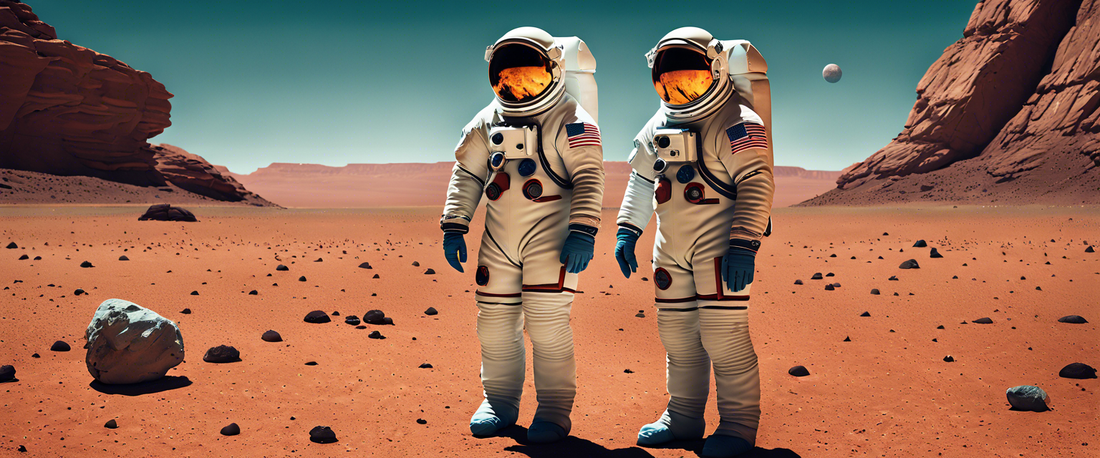
Understanding the Invisible Risks of Sending Astronauts to Mars
Share
Challenges of Mars Exploration
Sending people to Mars presents a unique set of challenges. The most noticeable hurdles include launching supplies into space, landing safely on the Martian surface, and ensuring the astronauts have the necessary resources for survival, including breathable air, potable water, and sustenance. However, there’s an often-underestimated factor that might pose the biggest risk: space radiation.
The Invisible Threat of Space Radiation
While ambitious figures like Elon Musk envision thriving cities on Mars, experts caution that safely transporting humans to the Red Planet is no small feat. In fact, the primary concern may not be the journey itself, but rather the effects of radiation that astronauts will encounter in space.
Understanding Space Radiation
Space radiation primarily originates from two sources: solar activity such as solar flares, and particles known as galactic cosmic rays. According to radiobiologist Eleanor Blakely, cosmic rays emanate from dying stars and consist of high-energy particles that permeate through space.
Health Risks of Space Radiation
The health implications of space radiation exposure are significant yet not fully comprehended. This radiation is believed to:
- Increase cancer risk
- Affect the central nervous system
- Contribute to degenerative maladies such as heart disease and cataracts
- Modify the immune system
Determining effective mitigation strategies is essential for ensuring astronauts' safety.
Long-term Exposure Complications
A unique challenge of long-duration space travel is the prolonged exposure to low doses of radiation. This contrasts sharply with common radiation interactions on Earth, where exposure tends to be brief and occurs under more controlled conditions.
The Nature of Galactic Cosmic Rays
Unlike typical radiation encountered, galactic cosmic rays inflict damage in a highly concentrated manner, which can be much harder for the body to repair. Research indicates that these charged particles can disrupt the normal functioning of cells, potentially impairing neurons and mitochondrial operations in the brain.
Effects of Microgravity
Space travel doesn't solely expose astronauts to radiation; they also endure the effects of microgravity. Research links microgravity with:
- Muscle atrophy
- Changes in brain structure
- Potential psychological impacts due to isolation
The combined effects of microgravity and radiation remain largely unstudied, leaving gaps in our understanding of their interaction.
Assessing Radiation Exposure Risks
NASA's projections indicate that missions to Mars might expose astronauts to more than 1 sievert of radiation, exceeding the agency's recommended limits. The greatest risk occurs during the trip itself, not necessarily on Mars due to the planet's atmospheric shielding.
Strategies for Mitigation
To decrease radiation exposure, NASA considers travel during certain solar activity phases, namely solar maximum periods to lessen cosmic ray intensity. Moreover, nuclear propulsion systems are under investigation to curtail space travel duration; however, such technologies pose their own safety concerns.
Radiation Shielding Solutions
Effective radiation shielding is vital for astronaut protection but is complex. Traditional metals like lead provide limited protection against charged particles. Innovative materials like polyethylene, rich in hydrogen atoms, are being studied for their efficacy.
Informed Risk Management
Navigating the risks involved in space exploration requires an understanding that varies from person to person, contemplating factors including age, gender, and health status. Astronauts often accept substantial risk to explore space, but family perspectives also weigh significantly on decisions made.
The Broader Implications of Exploration
Despite the hazards, space exploration remains crucial for advancing our understanding of human health and survival. As we move closer to Mars, we must balance the risks with the incredible potential knowledge that awaits. Considerations for both astronauts and their families will shape future missions and frameworks for safe exploration.
Conclusion
The prospect of a Martian colony beckons, yet, as we dream of interplanetary existence, we must prioritize protecting those who venture into the unknown. Striking a balance between exploration and safety will be imperative as we prepare for the next giant leap for mankind.


